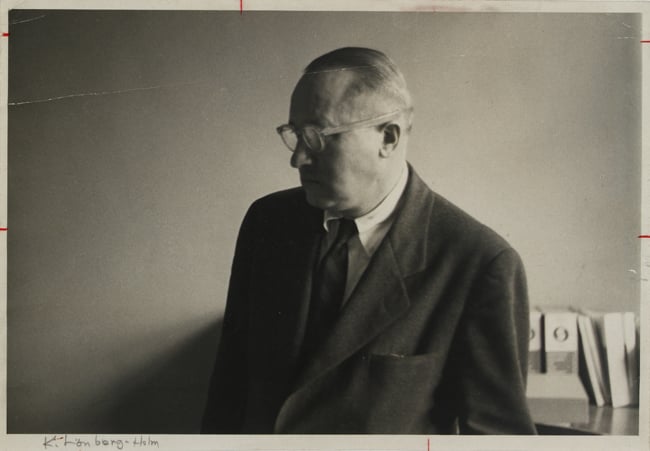
December 31, 2014
2014 in Review: All the Year’s Top Stories
A look back at the best features and articles from Metropolis.
On the eve of the New Year, we look back at our top features and articles of 2014. Here, you’ll find everything from think pieces and expert opinions to designer profiles and historical research. We’re excited to head into 2015 with a complete redesign and an expanded editorial approach. Stay tuned for much more.
The Postmodern Watchlist
New York’s Postmodern architecture deserves a whole lot more love, says preservationist Mike Gotkin. The preservation battles that have raged the last several years have neglected some of the city’s most notable buildings and spaces from the 1970s and 1980s. The Landmarks Commission has presided over the loss of several of these designs, and has shown little interest in correcting past oversight. Gotkin and Paul Makovsky developed this “watchlist” of Postmodern New York architecture to spur debate on the issue.
The Rockwell Way
Metropolis managing editor Shannon Sharpe shadowed dozens of architects from the Rockwell Group for weeks in August. The result was this unique profile, which celebrated the firm’s thirtieth anniversary and identified the keys—all seven of them—to Rockwell’s great success.

Knud Lonberg-Holm, the “invisible architect” of twentieth-century Modernism.
The Invisible Architect of Invisible Architecture
Metropolis editorial director Paul Makovsky spent months in the archives of late historian and collector Marc Dessauce to unearth the amazing story of Danish-American modernist architect Knud Lonberg-Holm. For Bucky Fuller, who floated the idea of writing a book on Lonberg-Holm for decades, the latter was “the first architect in my knowledge ever to talk about the ultimately invisible architecture.”
Lower Manhattan and the Tragedy of Business as Usual
Critic Michael Sorkin brings his caustic wit and wicked prose to bear in this appraisal of the World Trade Center complex, 13 years after its rebirth. “How much better this place would have been if it dared to exceed business as usual,” Sorkin asks.
Biennale Analysis:
Rem’s Kit of Parts
Whose Modernity
Rem’s Venice Biennale generated as many reviews and think pieces as you’d think. Metropolis editors Avinash Rajagopal and Samuel Medina, who both visited Venice in June, each offered their own take on Koolhaas’s big show.
Big Data, Big Questions
Writer Alex Marshall tackles the politics of the Smart City movement through three case studies—IBM’a Intelligent Operations Center in Rio de Janeiro, Siemens’s Cloud Data Center in New York, and Cisco’s development in the new Korean city of Songdo. “Large companies,” Marshall writes, “are involved in many of these efforts, and it bears watching how much control or veto power they end up with as city governments contract with them.”
The “Sensing” City Is the Future of Urbanism
Architect Carlo Ratti explains that the Smart City isn’t enough. The director of the MIT SENSEable City Lab, Ratti suggests that real-time data—generated by mobile and sensor technologies—could awaken the humanity in our buildings and public spaces.

Courtesy Dan Nguyen via Flickr
Faust on West 53rd Street
Erstwhile Metropolis columnist and current contributing editor Karrie Jacobs reads Faustian motivations in the drama of MoMA and the (now nonexistent) Folk Art Museum.
Why Charles Moore (Still) Matters
Critic Alexandra Lange evaluates the legacy of maverick architect Charles Moore in a penetrating essay that spans the Postmodern prophet’s decades-long career. Lange speaks to several of Moore’s old collaborators whose colorful anecdotes and various remembrances cut a much more complex figure than most historical accounts allow for.
Why Design Education Matters
Three directors of leading architectural and design institutions speak on the enduring value of design schools. Columbia GSAPP’s Amale Andraos, SCI-Arc’s Hernan Diaz Alonso, and Cranbrook Academy of Art’s Christopher Scoates weigh in on framing a curriculum, finding jobs for recent graduates, and making connections to the outer world.
What Is the State of Design Criticism?
Eighteen leading design critics voice their opinions on the value of criticism and how its form must change in the coming years.

Courtesy Snøhetta & MIR
Snøhetta Rethinks the Future of Times Square
Principals Craig Dykers and Claire Fellman expound on their plans to reimagine Times Square’s public spaces into “platforms for living.”
Futurist Predicts How Gen Z-ers Will Work
Dr. Michael O’Neill, senior research strategist at Haworth, looks into the future of the workplace and arrives at some interesting predictions. Unlike their parents, Gen Z-ers will have a higher estimation of cubicles and a highly structured office layout.
S.O.S. Shukhov: Moscow Icon Set to Be Dismantled
Writer and historian Ross Wolfe eloquently details the controversy surrounding the precarious existence of one of Soviet Modernism’s most enduring landmarks, the Shukhov Radio Tower.
The Green Building Wars
Architect and author Lance Hosey ponders whether Green Globes is really a credible alternative to LEED.

Visualization renders the future of Midtown in luxury towers
On New York’s Skyscraper Boom and the Failure of Trickle-Down Urbanism
Professor Joshua K. Leon investigates the failures of tickle-down urbanism through the lens of Midtown’s new class of skyscrapers, which serve to reinforce New York’s steep social hierarchy.
The High Line’s Last Section Plays Up Its Rugged Past
The elevated park’s final phase “offers a functional reminder of the structure’s past,” writers Anthony Paletta in his lyrical review.
Moral Responsibility, Zaha Hadid and the al-Wakrah Stadium
“What is the moral obligation of people involved in situations that are not easily resolved,” asks writer-academic Sherin Wing. She was writing with Zaha Hadid and the controversy surrounding the construction of the Qatar’s World Cup stadia in mind; the issue, however, doesn’t end there.
Recent Viewpoints
Viewpoints
Sustainability News Updates for Q2 2025





